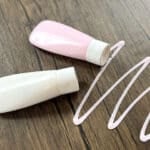
Rosemary & Peppermint Conditioner Recipe For Dry Hair
A fresh, herbaceous scented conditioner that's perfect for giving life back to your dry locks.
Print
Pin
Yield (adjustable): 200 grams
Ingredients:
Water Phase A
- 150 g (5.29 oz) Distilled Water
- 5 g (0.18 oz) Glycerine
- 4 g (0.14 oz) D-Panthenol Powder
Oil Phase B
- 12 g (0.42 oz) BTMS-25
- 2 g (0.07 oz) Cetyl Alcohol
- 6 g (0.21 oz) Mango Butter
- 10 g (0.35 oz) Camelina Oil
Cool Down Phase C
- 4 g (0.14 oz) Dimethicone
- 4 g (0.14 oz) Hydrolyzed Silk Peptides
- 2 g (0.07 oz) Geogard ECT
- 0.6 g (0.03 cups) Rosemary Essential Oil
- 0.4 g (0.01 oz) Peppermint Essential Oil
- Pink Food Coloring or color of your choice
- 8 oz PET Plastic Bottle PET, glass or aluminum
Instructions:
Measure Phases A + B
- Place all of the Phase A ingredients into one of the heatproof beakers (water, glycerin, and d-panthenol) and give it a quick stir to combine.150 g Distilled Water, 4 g D-Panthenol Powder, 5 g Glycerine
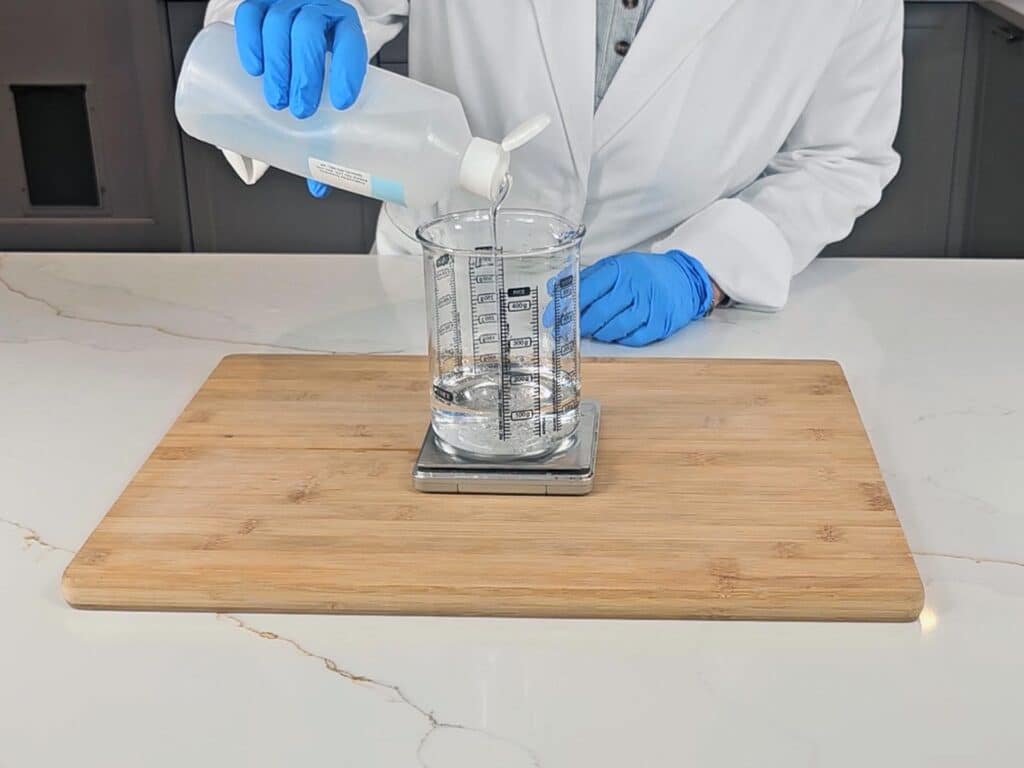
- In the other beaker place all of the Phase B ingredients (BTMS-25, cetyl alcohol, mango butter, and Camella Oil.12 g BTMS-25, 2 g Cetyl Alcohol, 6 g Mango Butter, 10 g Camelina Oil
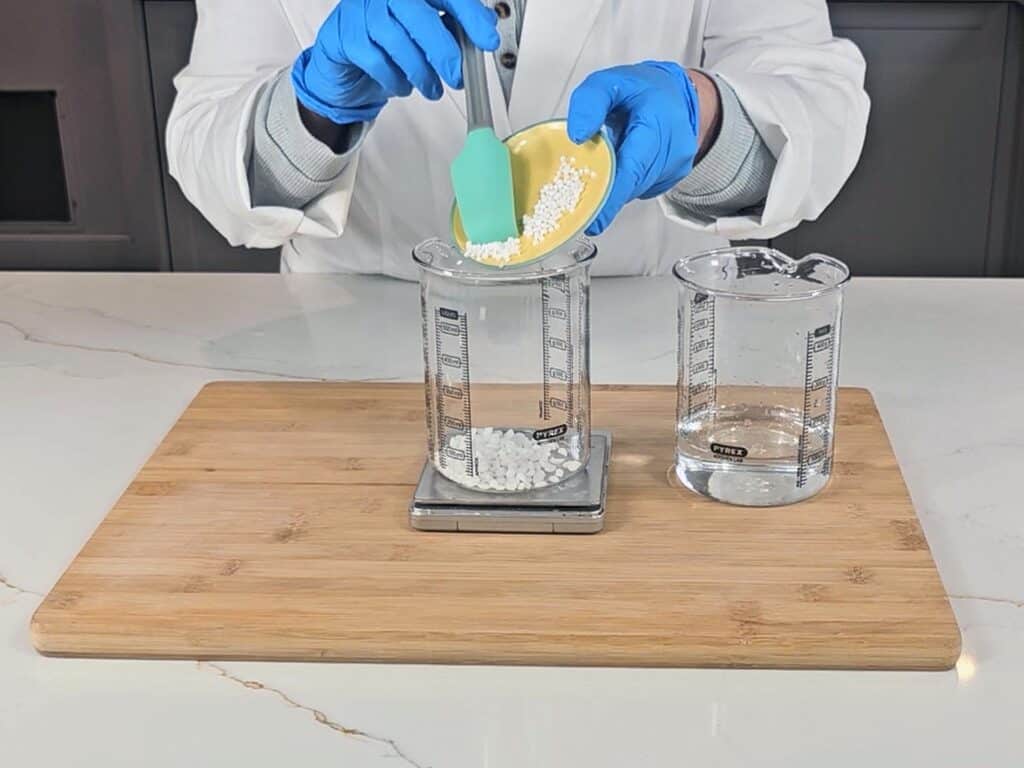
Combined Phases A+B
- Place both beakers into a bain marie or a shallow pan of simmering water, ensuring the water is not so high that the beakers are moving. Let them sit until the waxes and butter have completely melted and the water has heated through.
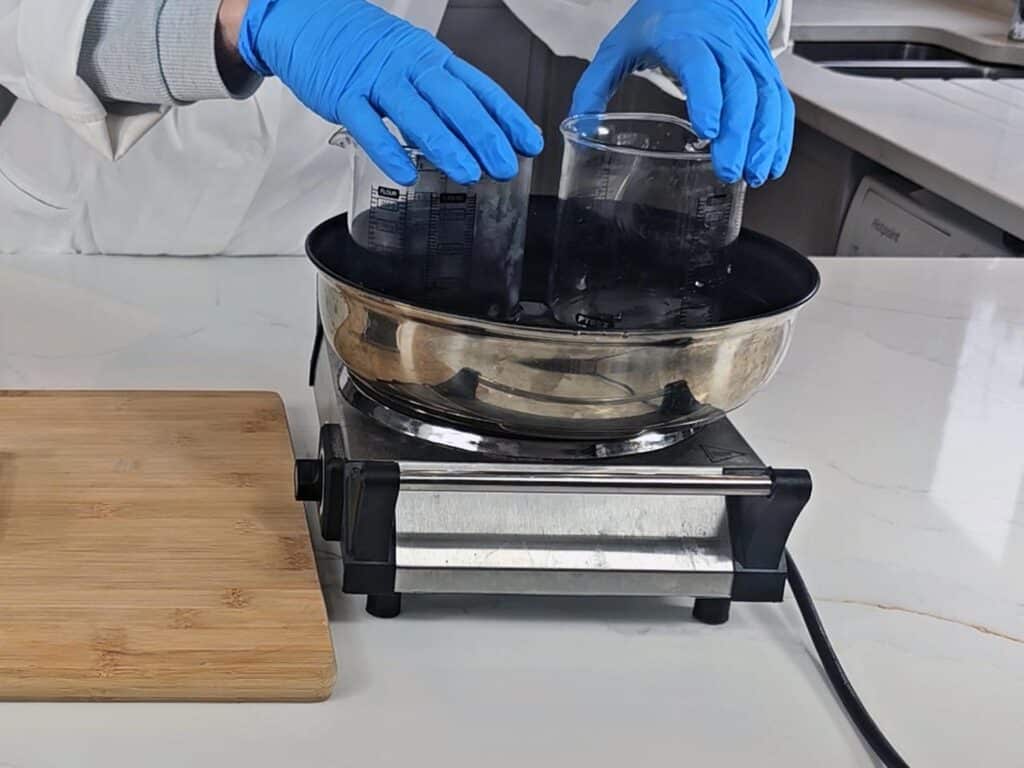
- Once melted, remove both beakers from the water and quickly pour the beaker containing water (phase A) into the beaker containing the oils (phase B)
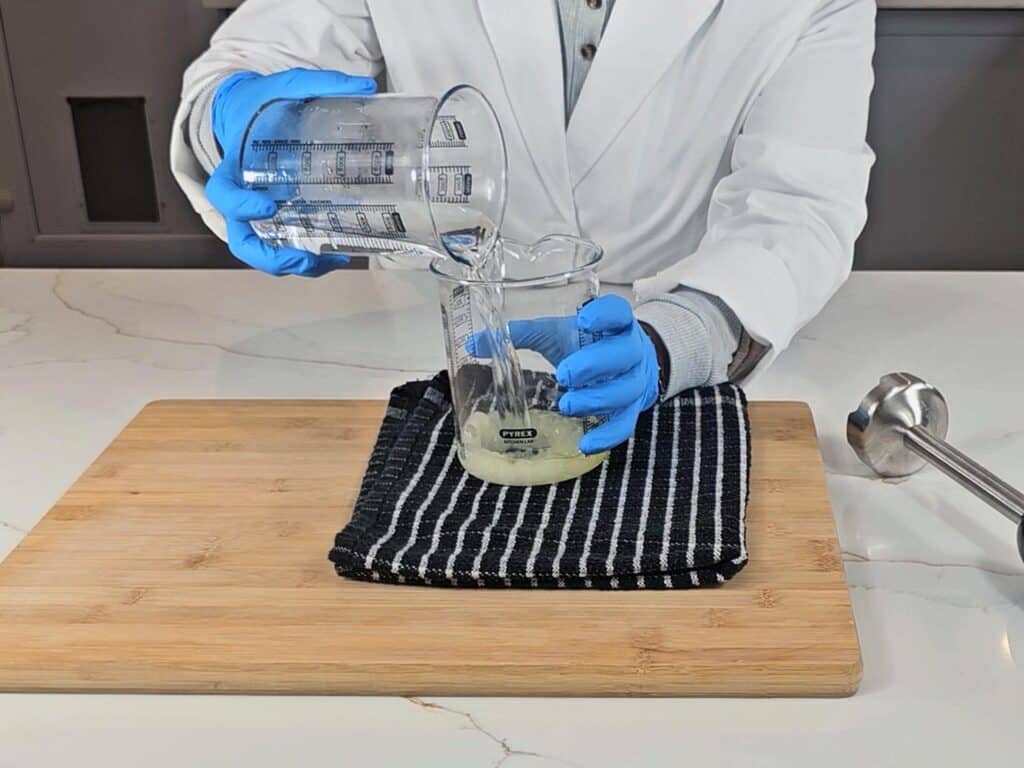
- Using a stick blender, start blending the oils and water together. After a few minutes our mixture should emlusify. Then allow to stand for a few minutes before continue to blend. As the conditioner cools and thickens, change to using a silicon spatula.
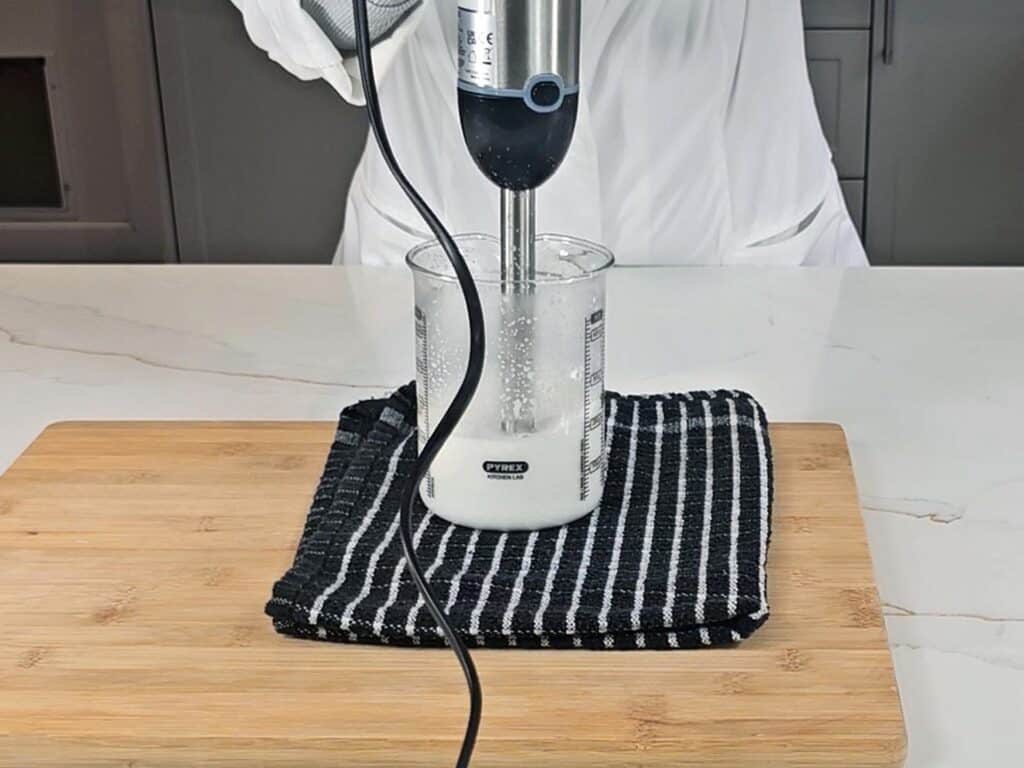
Cooldown Phase C
- When the conditioner has cooled to 40c (104f) you will notice that the conditioner has a lovely thick and creamy texture. So it is now ready for the cool-down ingredients.
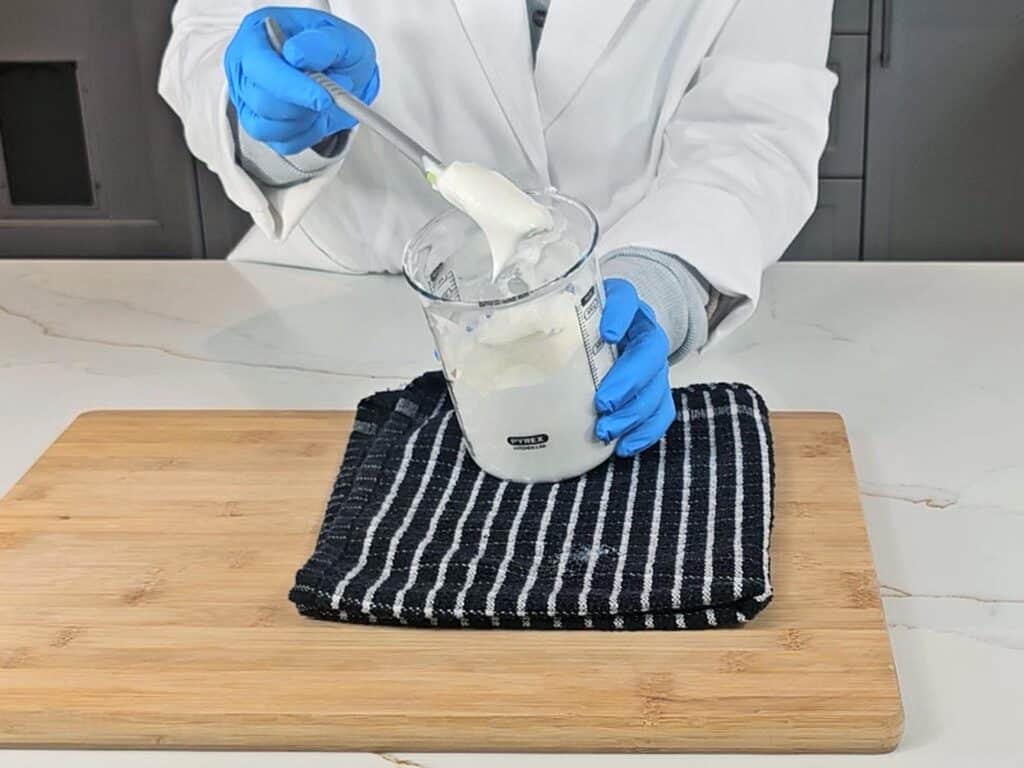
- Add the cool-down ingredients (phase C) dimethicone, hydrolyzed silk peptide, preservative ECO, and essential oils. Give the conditioner a good stir to make sure everything is well combined.4 g Dimethicone, 4 g Hydrolyzed Silk Peptides, 2 g Geogard ECT, 0.6 g Rosemary Essential Oil, 0.4 g Peppermint Essential Oil
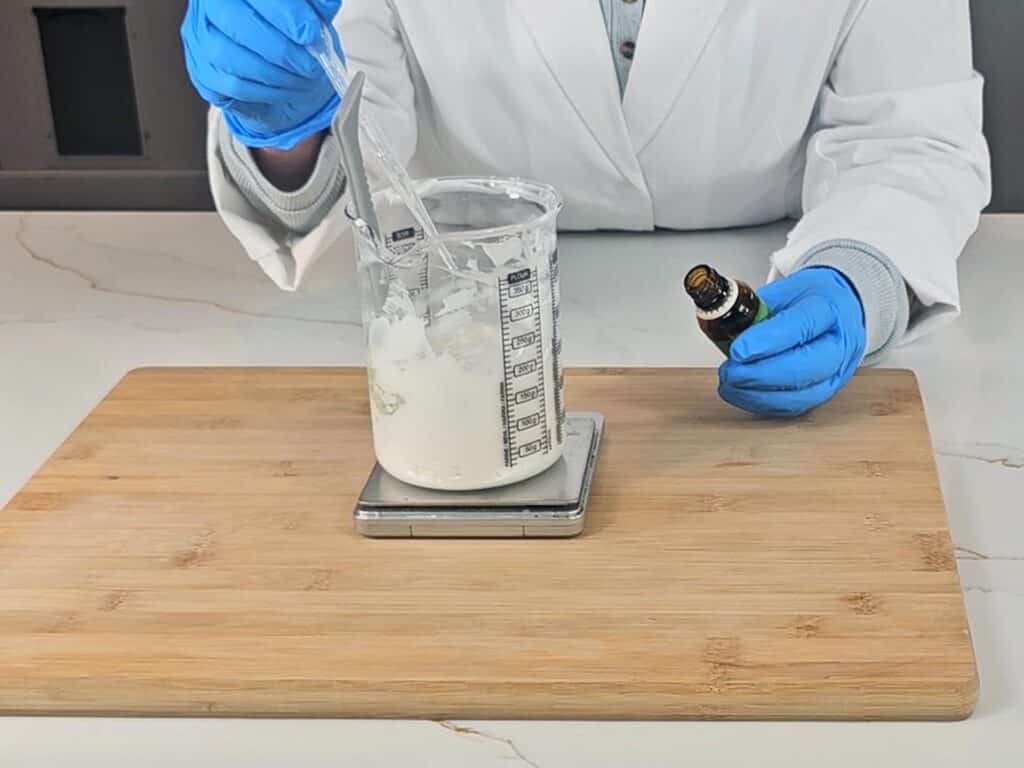
- If using, add your drop of food coloring.Pink Food Coloring
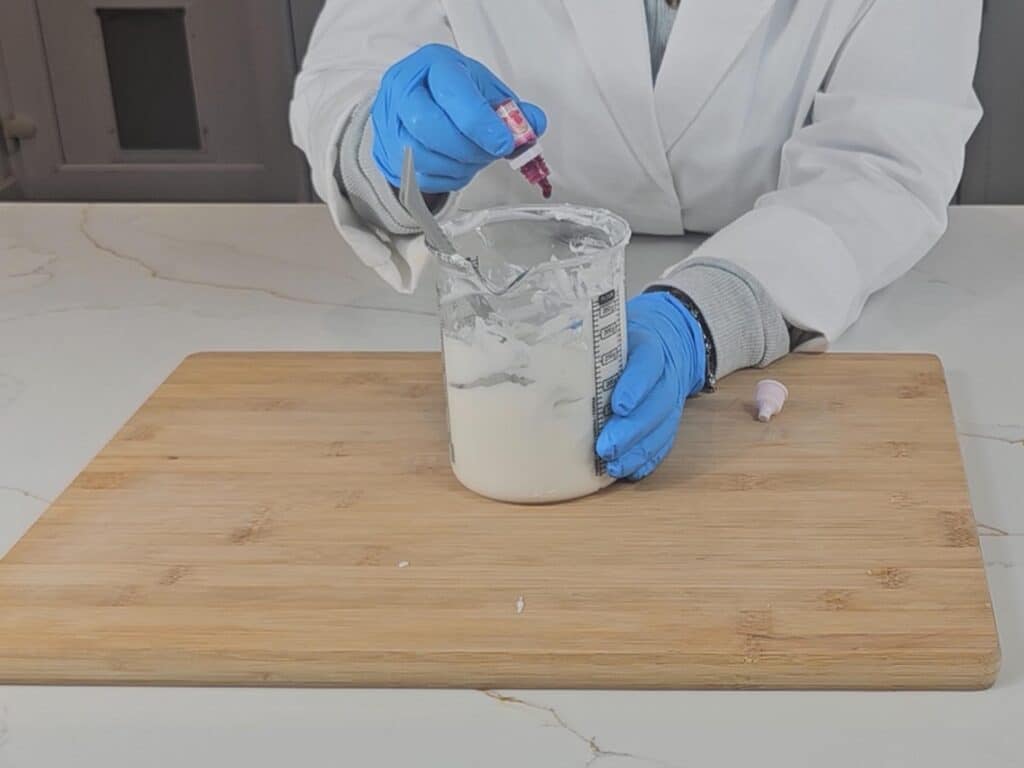
- Transfer the conditioner to a bottle or container ready for use.8 oz PET Plastic Bottle
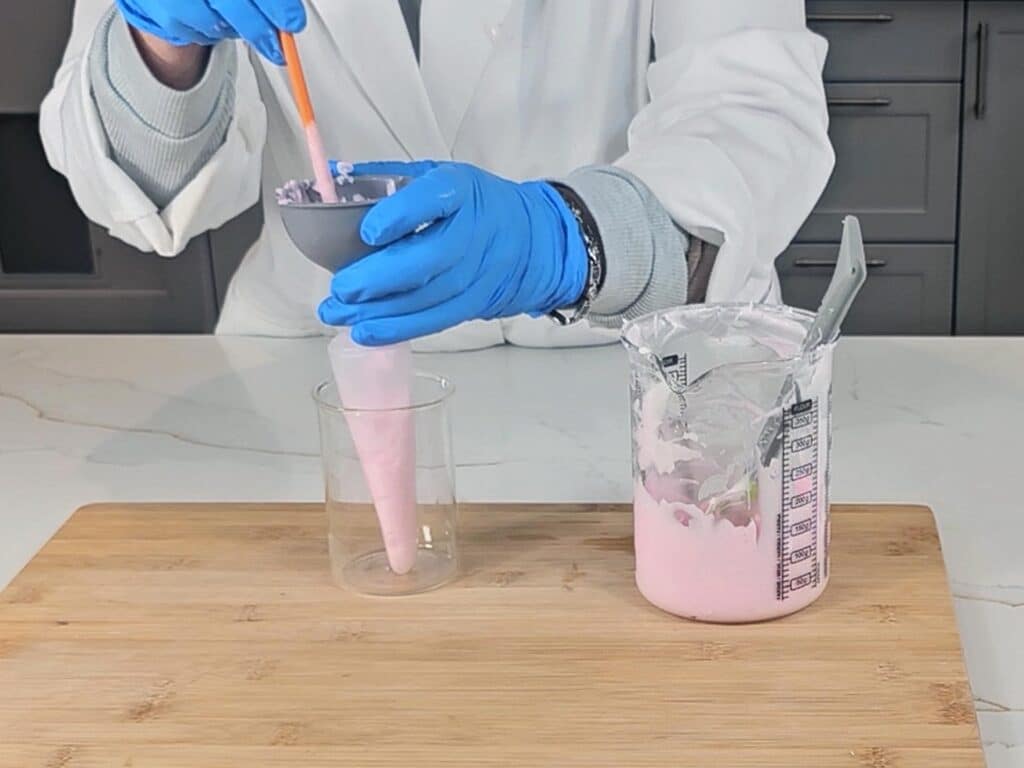
Notes:
It’s important to choose the right container for this recipe. Because of the presence of essential oils, our container must be made from PET plastic, glass or aluminium.
Essential oils are very concentrated extracts that can cause problems when we're exposed to them in high concentrations. It's very important to measure your essential oils with a small digitial scale that can measure at least 2 digits after the decimal point.
Tried this projectMention @Savvyhomemade or tag #savvyhomemade!